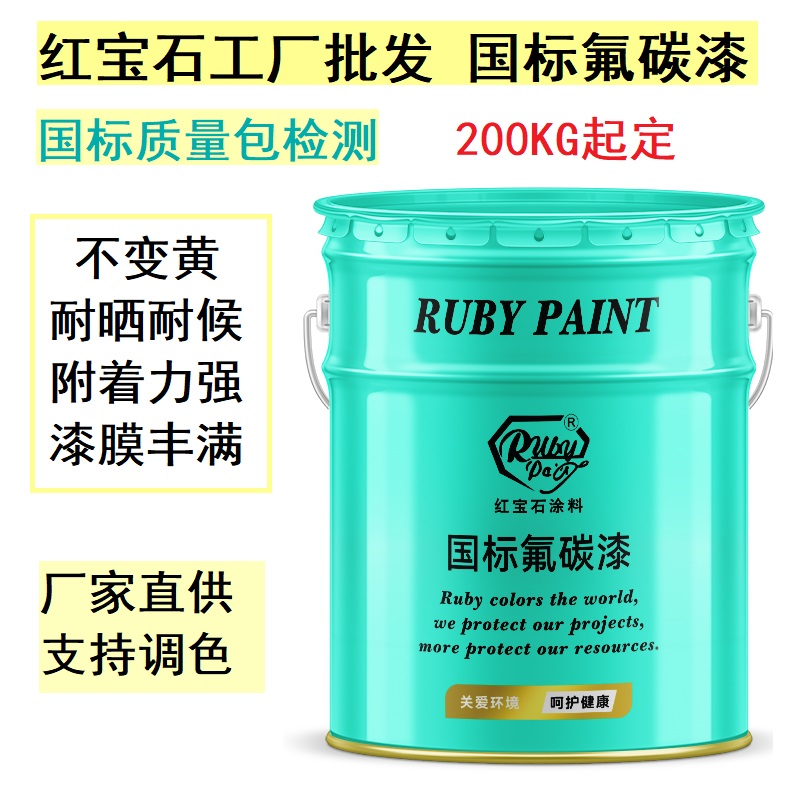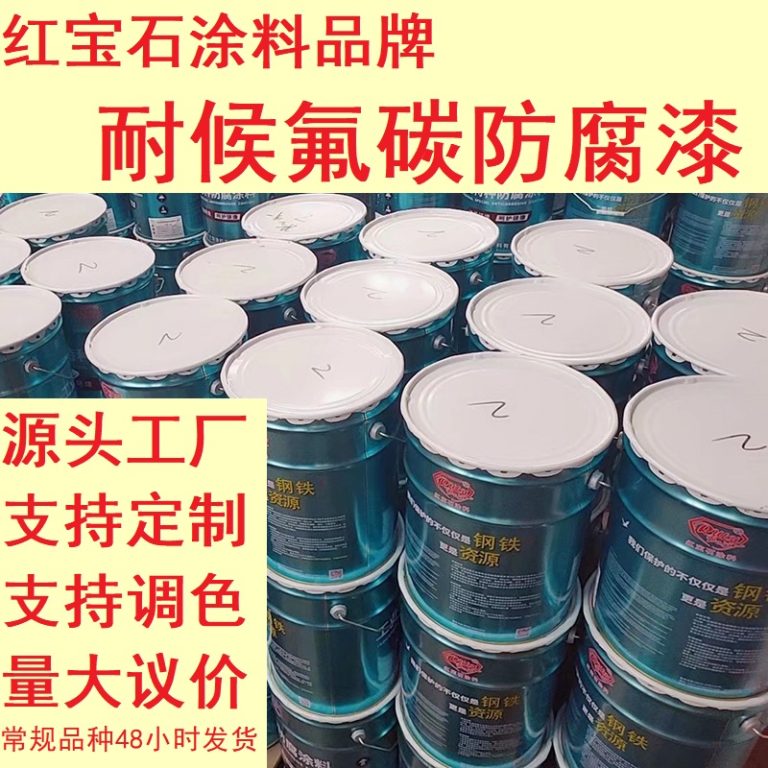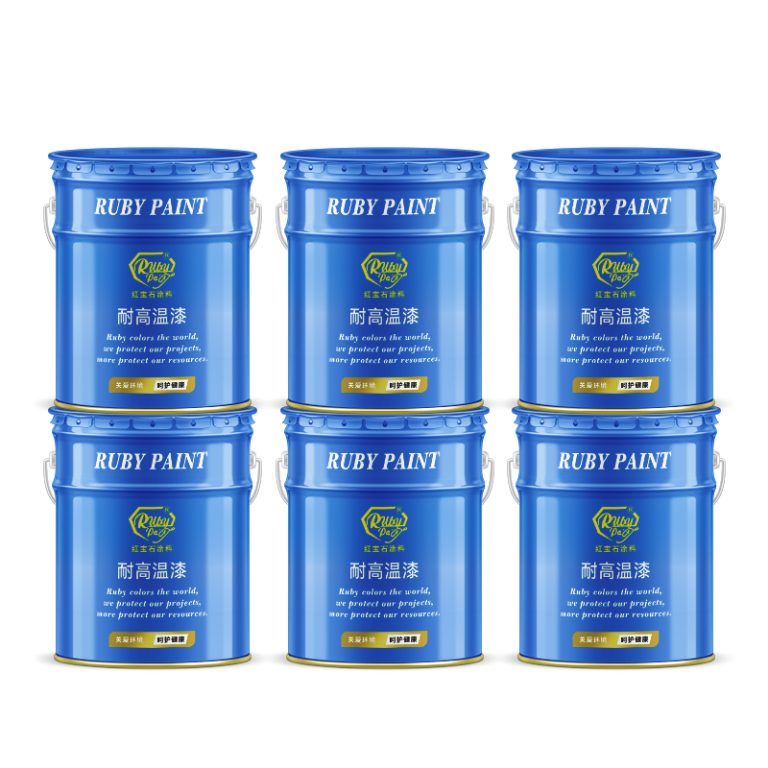Table of Contents
The Benefits and Applications of Fluoropolymer Paint in Industrial Coatings
Fluoropolymer paint, a type of high-performance coating, has garnered significant attention in the industrial sector due to its exceptional properties and versatility. This advanced paint formulation is composed of fluoropolymer resins, which impart a range of benefits that make it an ideal choice for protective and decorative applications across various industries.

One of the primary advantages of fluoropolymer paint is its outstanding durability. The molecular structure of fluoropolymers is characterized by strong carbon-fluorine bonds, which are among the most stable in organic chemistry. This stability translates into a coating that can withstand harsh environmental conditions, including prolonged exposure to ultraviolet (UV) radiation, extreme temperatures, and corrosive chemicals. As a result, fluoropolymer coatings exhibit minimal degradation over time, maintaining their aesthetic appeal and structural integrity far longer than conventional paints.
| Serial No. | Article Name |
| 1 | Epoxy Zinc rich paint |
Another significant benefit is the low maintenance requirement of fluoropolymer coatings. Their non-stick surface properties inhibit the adherence of dirt, dust, and other contaminants, which simplifies cleaning processes and reduces the frequency of maintenance cycles. This feature not only saves time and labor but also minimizes the use of harsh cleaning agents, contributing to more environmentally friendly maintenance practices.
In addition to durability and ease of maintenance, fluoropolymer paint offers excellent chemical resistance. It can resist a wide array of chemicals, including acids, bases, solvents, and hydrocarbons, making it an ideal protective layer for structures and equipment that are regularly exposed to chemical spills or fumes. This resistance ensures that the underlying material remains unharmed, extending the lifespan of the asset and reducing the need for costly repairs or replacements.
The versatility of fluoropolymer coatings is further demonstrated by their thermal stability. They can perform consistently at high temperatures without losing their mechanical properties or suffering from thermal degradation. This characteristic is particularly valuable in industries where equipment operates under high-heat conditions, such as in the aerospace, automotive, and energy sectors.
Fluoropolymer paint also boasts exceptional color and gloss retention. The coatings can maintain their original appearance for extended periods, even when subjected to direct sunlight and varying weather conditions. This long-lasting aesthetic quality is especially beneficial for architectural applications where the visual impact is a critical consideration.
The applications of fluoropolymer paint are diverse and span multiple industries. In the construction industry, it is used to coat metal roofing, curtain walls, and window frames, providing both protection and an attractive finish. The aerospace industry employs fluoropolymer coatings to safeguard aircraft exteriors from the rigors of high-altitude UV exposure and temperature fluctuations. In the energy sector, these coatings are applied to solar panels and wind turbines to enhance their durability and efficiency.
Moreover, the food processing industry values fluoropolymer paint for its non-toxic and non-reactive properties, which make it safe for contact with food products. The automotive industry utilizes these coatings for their ability to resist fuel and oil, thereby protecting vehicle components from corrosion and wear.
In conclusion, the benefits of fluoropolymer paint in industrial coatings are manifold, encompassing durability, low maintenance, chemical and thermal resistance, as well as excellent color and gloss retention. These attributes make it a superior choice for a wide range of applications, ensuring long-term performance and reliability. As industries continue to seek out materials that can withstand demanding environments while reducing operational costs, fluoropolymer coatings are poised to play an increasingly pivotal role in the future of industrial finishes.
Comparing Fluoropolymer Paints: A Guide to Selecting the Right Coating for Your Project
Fluoropolymer paint stands as a pinnacle of modern coating technology, offering exceptional durability, weather resistance, and aesthetic longevity. When selecting the right coating for a project, understanding the nuances between different fluoropolymer paints is crucial for achieving optimal performance and cost-effectiveness. This guide will delve into the comparative aspects of fluoropolymer coatings, providing insights to inform your decision-making process.
At the heart of fluoropolymer paint’s superior properties is its molecular structure, characterized by strong carbon-fluorine bonds. These bonds confer a high resistance to UV radiation, chemicals, and physical abrasion, making fluoropolymer coatings ideal for protective and decorative applications on buildings, bridges, and industrial equipment. However, not all fluoropolymer paints are created equal, and discerning the subtle differences between them is key to selecting the most suitable product for your project.
| Serial Number | Name |
| 1 | Epoxy Zinc rich paint |
One of the most well-known fluoropolymer paints is polytetrafluoroethylene (PTFE), renowned for its non-stick properties and heat resistance. PTFE coatings are often used in cookware and industrial applications where low friction and high-temperature tolerance are paramount. However, for architectural and exterior projects, PTFE may not be the most practical choice due to its softer surface compared to other fluoropolymers.
In contrast, fluorinated ethylene propylene (FEP) and perfluoroalkoxy (PFA) coatings offer similar non-stick and chemical resistance qualities but with improved flow and film-forming capabilities. These paints are better suited for applications requiring a smooth, clean finish, such as in the pharmaceutical and food processing industries. Nevertheless, their use in outdoor environments may be limited by their lower mechanical strength and weatherability compared to other fluoropolymer options.
A more versatile and widely used fluoropolymer paint is polyvinylidene fluoride (PVDF). PVDF coatings are favored for architectural applications due to their excellent color retention, resistance to chalking, and ability to withstand harsh environmental conditions. They are commonly applied to metal roofing, wall panels, and curtain walls, providing a long-lasting finish that maintains its aesthetic appeal over decades. When comparing PVDF to other fluoropolymers, its balance of performance and cost often makes it the preferred choice for building exteriors.
Another consideration when comparing fluoropolymer paints is the application method and curing process. Some fluoropolymer coatings require specialized equipment and high-temperature curing, which can impact project logistics and costs. For instance, PTFE coatings typically need to be sintered at elevated temperatures, necessitating the use of ovens or infrared lamps. On the other hand, PVDF and other fluoropolymer paints can be applied using conventional spray equipment and air-dry or low-temperature cure, simplifying the application process and reducing energy consumption.
Environmental impact and sustainability are also important factors in the selection process. Fluoropolymer paints with lower volatile organic compound (VOC) emissions are increasingly in demand as regulations tighten and environmental consciousness grows. Manufacturers have responded by developing water-based and high-solids fluoropolymer coatings that meet stringent environmental standards without compromising performance.
In conclusion, when comparing fluoropolymer paints, it is essential to consider the specific requirements of your project, including the desired properties, application conditions, environmental considerations, and budget constraints. Whether you prioritize non-stick performance, weather resistance, ease of application, or sustainability, there is a fluoropolymer coating tailored to your needs. By carefully evaluating the characteristics and trade-offs of each option, you can select a fluoropolymer paint that will provide superior protection and aesthetic quality for years to come.





